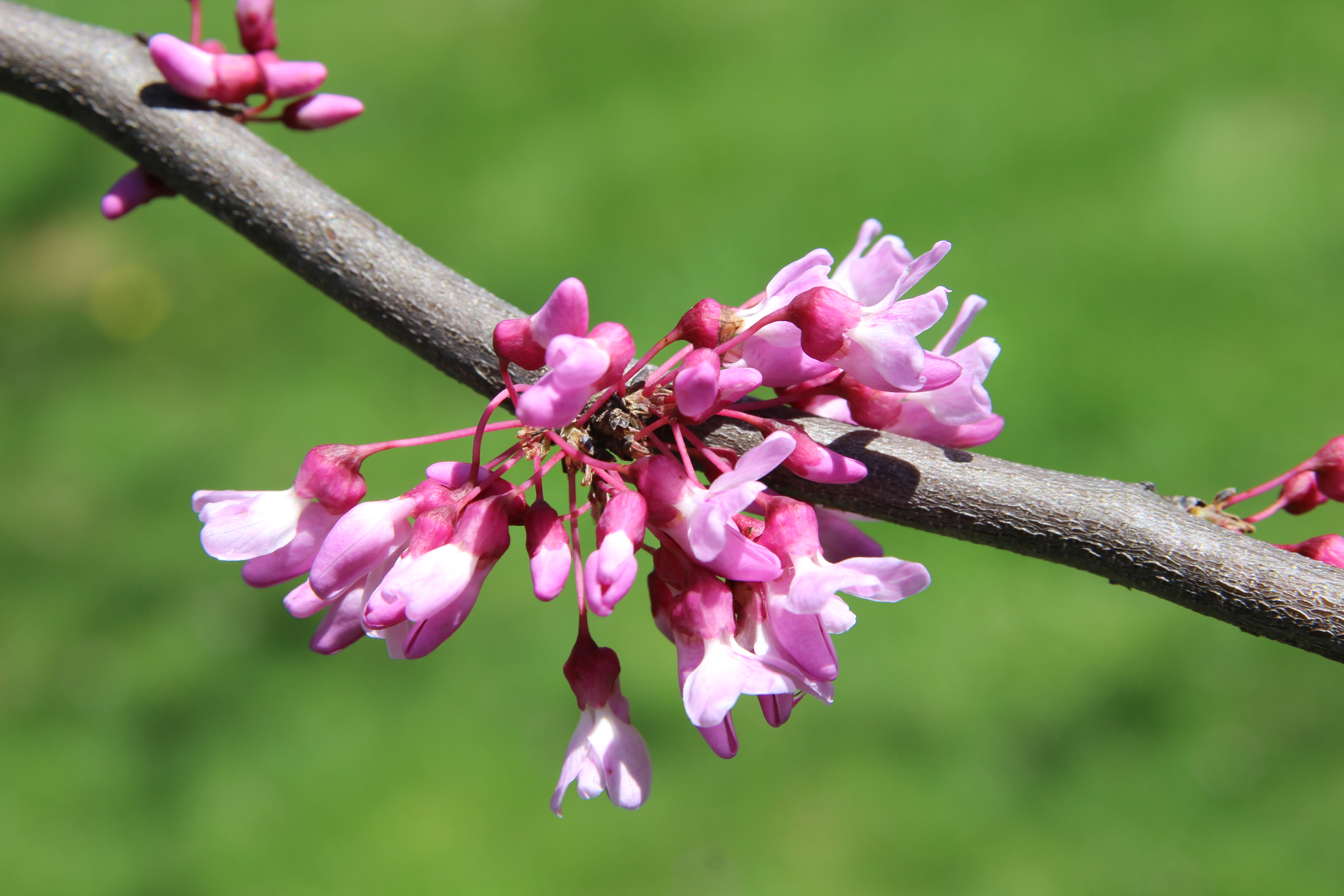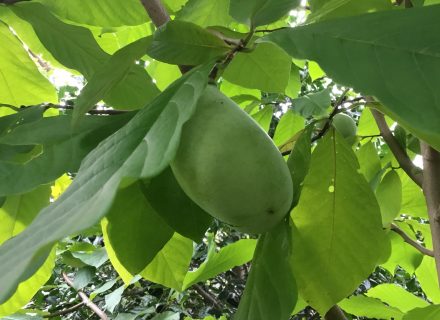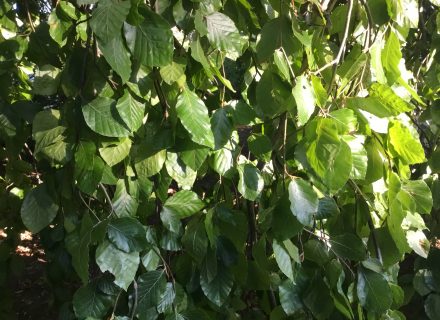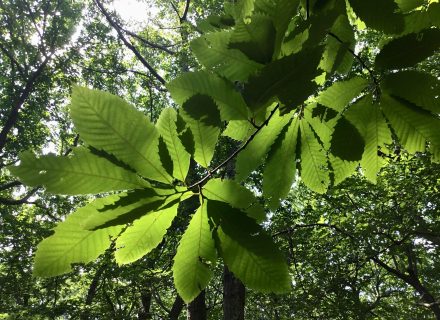Latin Name: Cercis canadensis
Locations: Five redbuds, planted by Friends of Trees, are currently blooming at the corner of Cobbetts Lane and Manhanset Road. Two large, multi-trunked trees grace the lawn of the Dering Harbor Inn.
Tree stats: The native eastern redbud has a wide range, thriving from Massachusetts to Florida and west to Texas. A small-statured tree that tops out at 30 feet, redbud is treasured for its late April, early May pink flowers that are followed by distinctive heart-shaped leaves. The flowers give way to seedpods that can remain throughout the winter. Eastern redbud is also called the Judas tree, a reference to the Biblical account of Judas Iscariot’s betrayal and suicide. Though the species he hung himself from is not named, it’s often reported as Cercis siliquastrum, a redbud prevalent in the Mediterranean region
Cauli…what?: Redbud flowers are unusual in that they emerge directly from the trunk and branches versus new growth or stems. Botanists call this trait cauliflory from the Latin caulis and flor, meaning “stem flower.” Most cauliflorous trees are tropical. Two familiar examples are cacao, the source for chocolate, and papaya. There are several theories as to why these trees evolved this particular quirk. Flowers blooming on a sturdy trunk may be easier to reach for heavier insects and animals. Also, a sturdy trunk is better for supporting large fruit like papaya or the melon-sized jackfruit which can weigh up to 80 pounds. While these tropical trees are pollinated by a variety of creatures, the eastern redbud is pollinated by bees.
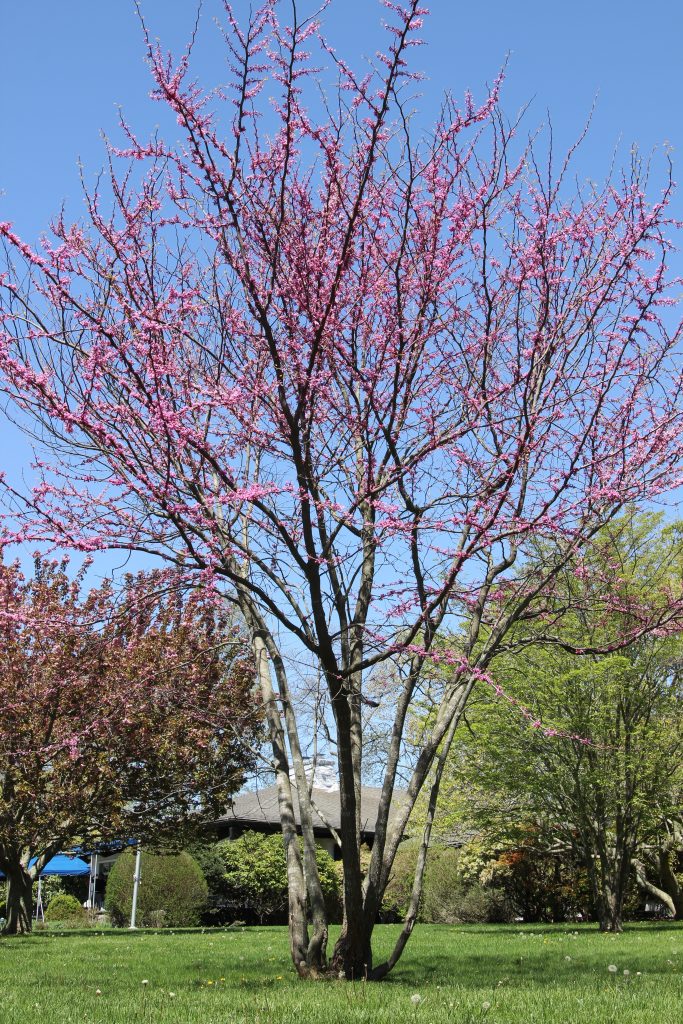
A perfect landscape tree: Aside from its welcome spring blooms, the eastern redbud fits nicely in small yards, thriving in full sun or part shade. If pink is not your thing, the cultivars ‘Alba’ and ‘Royal White’ offer white flowers. If you want stronger color, the cultivar ‘Oklahoma’ has rich magenta flowers. The Chinese redbud (Cercis chinensis) is more shrub than tree but, according to tree maestro Michael Dirr, it’s worth growing for its “lustrous dark green leaves” and “rosy-purple flowers.” Like many trees, redbuds are susceptible to various diseases, but don’t let this stop you from giving one a place of honor in your yard.
Photos: Tim Purtell

